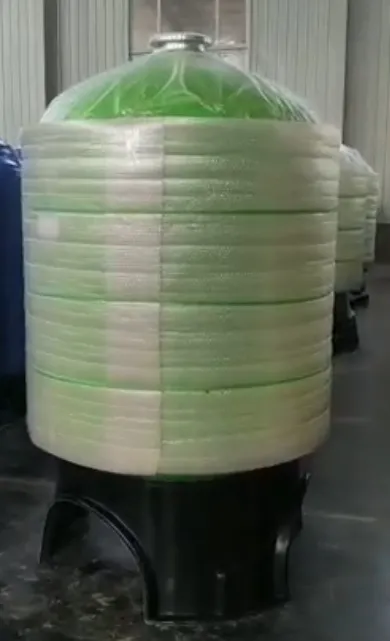loading...
- No. 9, Xingyuan South Street, Dongwaihuan Road, Zaoqiang County, Hengshui, Hebei, China
- admin@zjcomposites.com
- +86 15097380338
- Welcome to visit our website!
well pressure tank
Understanding Well Pressure Tanks An Essential Component of Water Systems
When it comes to residential and agricultural water systems, efficiency and reliability are key. One of the essential components that contribute to the smooth operation of these systems is the well pressure tank. This often-overlooked device plays a critical role in maintaining water pressure and ensuring the availability of water on demand. In this article, we will explore the function, types, and maintenance of well pressure tanks.
A well pressure tank is a specialized container that stores water pumped from a well. Its primary function is to maintain pressure in the water delivery system, allowing for a constant and easily accessible water supply. When water is drawn from a faucet, for instance, the pressure tank releases a certain volume of water to maintain flow. When the water level falls below a certain point, the pressure switch activates the pump to refill the tank, thus providing a reliable source of water without requiring the pump to run continuously.
There are two main types of well pressure tanks bladder (or diaphragm) tanks and air-over-water tanks. Bladder tanks are the most common type used today due to their efficiency and reliability. They consist of a rubber bladder that expands and contracts as water is pumped in and out. This design minimizes waterlogging, reduces the risk of contamination, and helps achieve consistent water pressure.
On the other hand, air-over-water tanks are traditional models that use a column of air above the water to create pressure. While they are generally less efficient than bladder tanks, some users prefer them due to their simplicity and lower initial cost. However, these tanks require more maintenance, as the air pressure must be regularly checked and adjusted to maintain optimal performance.
well pressure tank

Maintenance of well pressure tanks is crucial for ensuring their longevity and the efficiency of the entire water system. Regular inspection of the tank for leaks, rust, or wear can prevent small problems from escalating into major issues. Additionally, homeowners should periodically check the air pressure in their pressure tank, especially in air-over-water models. The ideal air pressure should typically be set 2-3 psi below the cut-in pressure of the pump. This ensures that the tank functions effectively and that the pump operates efficiently.
Another key maintenance task is inspecting the bladder in bladder tanks. If the bladder is punctured or damaged, it can lead to a significant drop in pressure and reduced water supply. If you suspect damage, it is often necessary to replace the tank entirely, as repairs to the bladder are not typically feasible.
Installing a well pressure tank also requires careful consideration. Factors such as tank size, pump capacity, and household water demand play critical roles in determining the best tank for your needs. A tank that is too small can lead to rapid cycling of the pump, which may shorten its lifespan, while a tank that's too large can result in water stagnation and potential contamination.
In conclusion, well pressure tanks are a vital component of any system that relies on groundwater. Their ability to maintain water pressure and ensure a reliable supply cannot be overstated. By understanding the functions of bladder and air-over-water tanks, performing regular maintenance, and taking care during the installation process, homeowners and farmers alike can enjoy the benefits of a dependable water supply for years to come. Investing in a high-quality pressure tank and staying proactive about its upkeep is not just a matter of convenience; it’s essential for ensuring the effectiveness and longevity of your water system.
-
GRP Structures: The Future of Lightweight, High-Performance EngineeringNewsJun.20,2025
-
FRP Water Tank: High-Performance Storage for Corrosive and Clean Water SystemsNewsJun.20,2025
-
FRP Square Tube: The New Industry Standard for Chemical and Structural ApplicationsNewsJun.20,2025
-
FRP Pultruded Profiles: The Ultimate Choice for Lightweight Structural StrengthNewsJun.20,2025
-
FRP Handrails: The Safer, Smarter, and Stronger Choice for Modern InfrastructureNewsJun.20,2025
-
FRP Grating: The Smart Solution for Durable, Lightweight Industrial FlooringNewsJun.20,2025
-
Why Choose a Galvanized Water Tank for Your Storage NeedsNewsMay.21,2025
